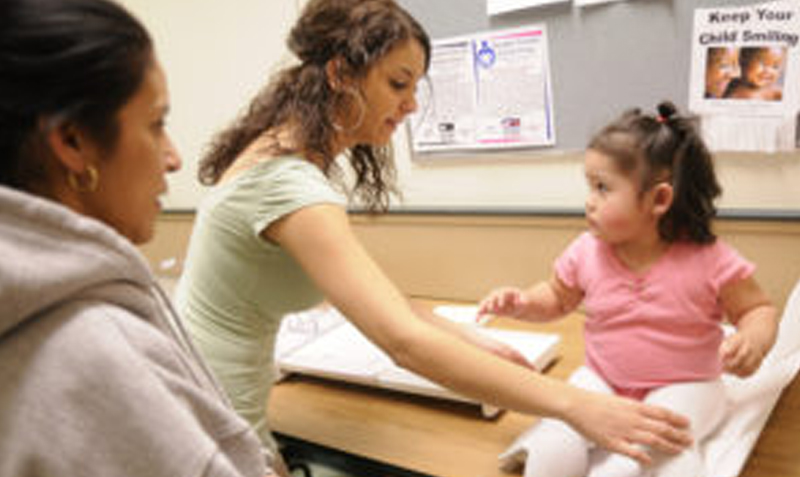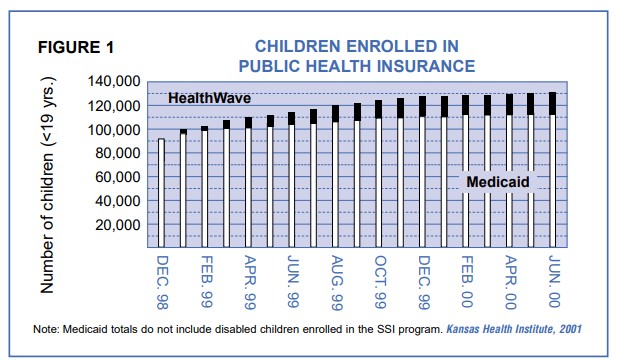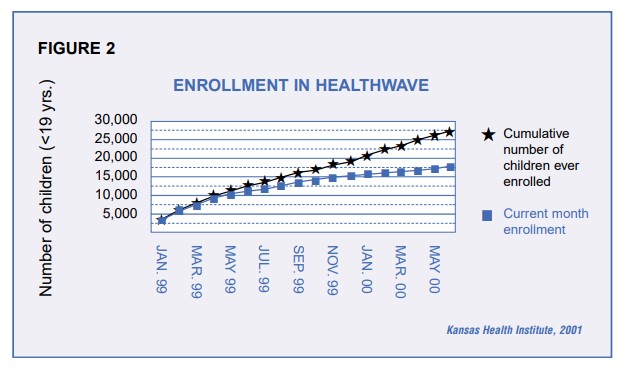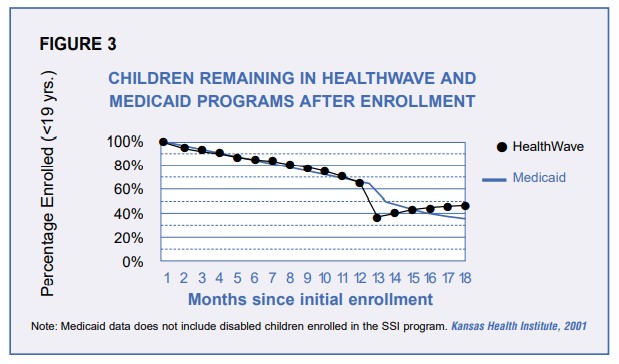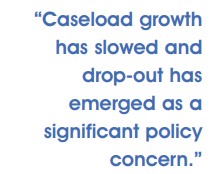Background
This Issue Brief examines enrollment patterns of children in HealthWave and Medicaid during the first eighteen months of the new HealthWave program. The State of Kansas launched the HealthWave program on January 1, 1999, in an effort to provide health insurance to uninsured children whose family’s income is too high to qualify for Medicaid but does not exceed 200 percent of poverty. At the same time, the State took a number of steps to promote enrollment both in the new HealthWave program and in the longstanding Medicaid program. They initiated an unprecedented outreach campaign targeted at HealthWave- and Medicaid-eligible children, and designed and implemented a simple, four-page mail-in application that could be used by HealthWave and Medicaid applicants alike. They also eliminated asset limits, reduced requirements for documenting income, and did away with monthly eligibility reviews by providing twelve months of continuous eligibility to children enrolling in HealthWave and Medicaid applicants alike. They also eliminated asset limits, reduced requirements for documenting income, and did away with monthly eligibility reviews by providing twelve months of continuous eligibility to children enrolling in HealthWave and Medicaid.
Data
Data analyzed in this report consist of enrollment records from the Kansas Department of Social and Rehabilitation Services (SRS) for all children in HealthWave and Medicaid who are under 19 years of age and are not disabled.
Kansas HealthWave Evaluation Project
This three-year, $1.4 million evaluation of the new HealthWave program includes a survey of 1,500 HealthWave and Medicaid families, focus groups with HealthWave families, analysis of enrollment and other administrative data, and extensive discussions with program administrators and health care providers from around the State. The project runs through September 2002. KHI serves as the lead organization for the project, where Robert St. Peter, M.D., is the principal investigator and R. Andrew Allison, Ph.D., is the project manager and co-investigator.
Collaborating Organizations
-
- Kansas Health Institute
- Kansas Department of Social and Rehabilitation Services
- Kansas Department of Health and Environment
- University of Kansas: School of Social Welfare
- University of Kansas Medical Center: Department of Health Policy and Management
- School of Nursing
- Department of Preventive Medicine, School of Medicine-Wichita
- Kansas State University: Survey Research Laboratory
- Kansas Foundation for Medical Care
Organizations Funding the Project
-
- U.S. Agency for Healthcare Research and Quality
- U.S. Health Resources and Services Administration
- David and Lucile Packard Foundation
- Kansas Health Foundation
- United Methodist Health Ministry Fund
- Prime Health Foundation
